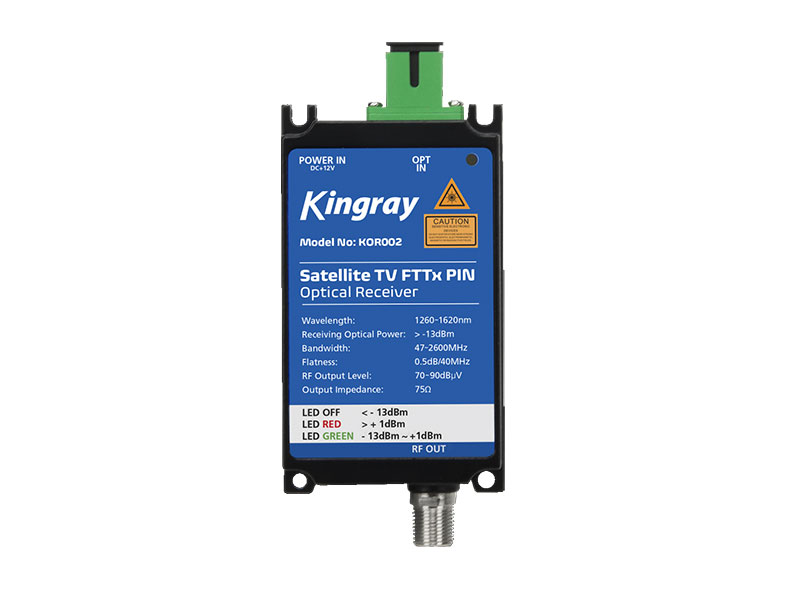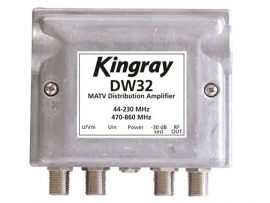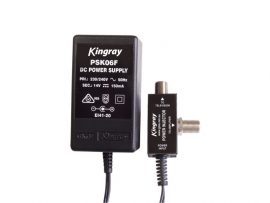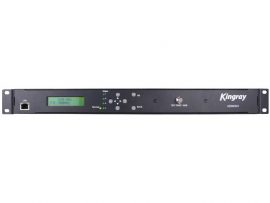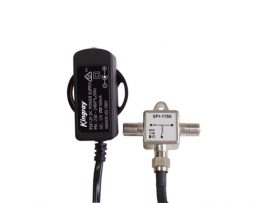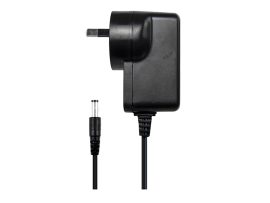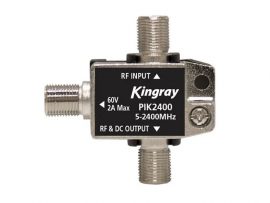Description
Kingray KOR002 Optical Fibre Receiver
The Kingray KOR002 Optical Receiver uses a high-sensitivity PIN detector. It can receive digital signal (DVB-C, DVB-T), as well as satellite TV (DVB-S) within the frequency range of 47~2600MHz on a single fibre.
The optical receiver is powered by a Kingray PSK12S power supply (sold separately). Foxtel Approved.
Key Features
- Frequency Range 47~2600 MHz
- Input Wavelength 1260~1620nm
- Receiving Sensitivity Range: -13dBm to +1dBm
- RF Output Level: Typically 70~90dB
- High linearity, suitable for Digital TV and SAT-IF application
- Digital TV (DVB-C, DVB-T) and Satellite TV (DVB-S) signal can be received via a single fibre at the same time
- LED Indicator
- Compact in design, wall mountable and light weight
- Optical Connector: SC/APC
- RF Connector: F-Female
RF over fiber (RFoF) is a technology that enables the transmission of radio frequency (RF) signals over optical fiber cables. It combines the advantages of both radio frequency and fiber optic communication systems, providing long-distance transmission, low signal loss, high bandwidth, and immunity to electromagnetic interference. RFoF is commonly used in various applications, including telecommunications, satellite communications, wireless networks, and military systems.
Here’s a basic explanation of how RF over fiber works:
- Modulation: The RF signal, typically in the range of a few megahertz (MHz) to several gigahertz (GHz), is modulated onto an optical carrier signal. Modulation can be done using techniques like intensity modulation, where the intensity of the optical signal is varied according to the amplitude of the RF signal.
- Optical Transmission: The modulated optical signal is then transmitted over a single-mode or multimode optical fiber. Optical fibers are used because they offer low signal attenuation and can transmit data over long distances with minimal losses.
- Fiber Link: The optical fiber serves as a transmission medium, and it carries the modulated RF signal from one end to the other. The RFoF link can span several kilometers or even longer, depending on the quality of the optical fiber used.
- Optical-to-Electrical Conversion: At the receiving end of the fiber link, the optical signal is converted back into an electrical signal. This process involves using an optical receiver that converts the light signals into electrical currents.
- Demodulation: The electrical signal is then demodulated to retrieve the original RF signal. The demodulation process essentially reverses the modulation performed at the transmitting end.
- Signal Amplification: In some cases, signal amplifiers might be used at certain intervals along the fiber link to compensate for signal losses and maintain signal integrity.
Benefits of RF over Fiber:
- Signal Quality: RFoF preserves the signal quality over long distances, as optical fiber has very low signal attenuation compared to traditional coaxial cables.
- EMI Immunity: Since the RF signals are transmitted optically, RFoF is immune to electromagnetic interference (EMI) and radio frequency interference (RFI).
- Bandwidth: Optical fibers offer high bandwidth capabilities, allowing for the transmission of a wide range of RF frequencies simultaneously.
- Lightweight and Compact: RFoF systems can replace bulky and heavy coaxial cables, making installations more manageable and efficient.
- Secure Communication: Optical fibers provide a high level of security as they are difficult to tap into or intercept compared to traditional copper cables.
RF over fiber is a versatile technology that can be used in various applications where long-distance, high-quality RF signal transmission is required. Its ability to integrate with existing fiber optic infrastructure and radio frequency systems makes it an attractive solution for modern communication networks.

